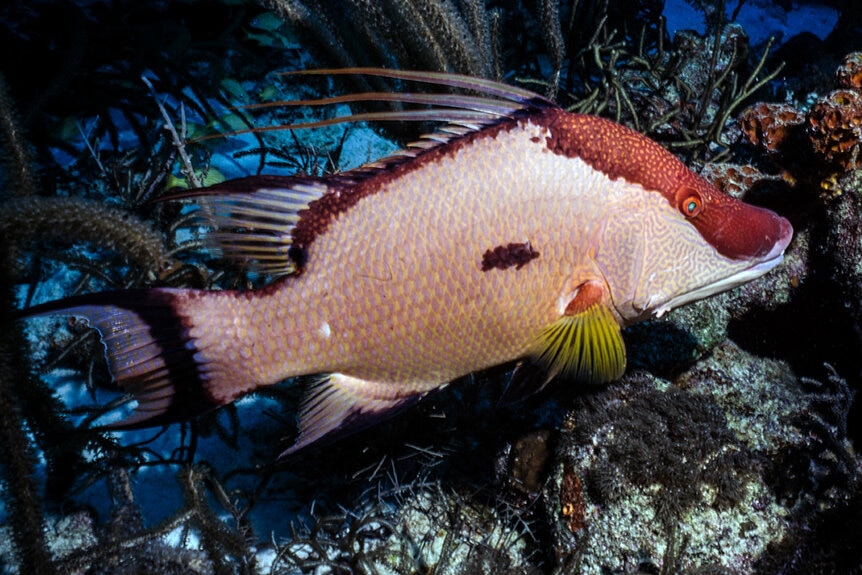Create a free profile to get unlimited access to exclusive videos, sweepstakes, and more!
Dead or Alive, Hogfish “See” with Their Skin
We're not sure we want to keep seeing after we're dead.
In the 2020 adaptation of The Invisible Man (streaming now on Peacock!) inventor Adrian Griffin (Oliver Jackson-Cohen) develops a high-tech optical suit which pays attention to the surrounding environment and mimics it. The result blends seamlessly into the environment, rendering the wearer entirely invisible.
To date, we haven’t managed to crack the technology necessary for a functional invisibility suit (not for lack of trying) but nature has! Complex camouflage has evolved several times in disparate parts of the plant and animal kingdoms with varying degrees of success. The humble hogfish isn’t quite as good at camouflage as their cephalopod peers, but they’re certainly no slouches, as evidenced by a new study from marine biologist Lorian Schweikert, and colleagues, published in the journal Nature Communications.
How Hogfish Match Their Environment, Even When They’re Dead
Schweikert had a eureka moment regarding the camouflage of hogfish not in the lab, but on a boat, according to the New York Times. A dead hogfish, killed by the injuries of a fishing spear, changed its exterior color to match that of the boat despite a clear break between the eyes and the skin, by virtue of it being dead.
RELATED: Be the Stick. Some Camouflage is Better Than Others
Recognizing that the eyes couldn’t have been controlling the action, Schweikert realized there must be something else at play. Then they headed to the lab. Hogfish typically take on one of three general styles, or morphs. There’s a sort of rusty brown costume, a speckled red and white getup, and a plain white fit for when they want to be classy. It’s a rather small wardrobe, but those three options work surprisingly well to allow the fish to blend in with their environment. The question is how they know when to change how they present.
In the lab, Schweikert and the team identified a new type of cellular relationship buried deep within the skin. It’s a two-part system that works together to monitor the environment and control color change in real time. In short, hogfish skin can see the environment even if the fish itself consciously can’t. Even if the fish in question is dead.
The trick, it turns out, is a combination of chromatophores (pigmented cells capable of changing their appearance) and a kind of light-receptive protein called opsins. In humans, opsins are found in the eyes where they belong, but you’ll also find them in the brain and in the skin, where they do things like help control melanin production, hair growth, and healing.
RELATED: Predator's camouflage creeps closer to reality with new color-changing smart gels
In hogfish, the opsins are buried beneath the chromatophores in the skin. At first glance, you might think that would obscure their ability to sense the outside world, and you’d be right, but that’s actually why they work so well. Researchers found that the chromatophores act as a filter, blocking some of the light before it gets to the opsins. That creates a feedback loop which allows the cells to more accurately match the surrounding environment, even and especially if the fish can’t see what it’s trying to match.
Nature is often better at solving engineering problems like invisibility suits because it has to be. In the game of life, you either figure out how to build better defenses or you die. Sometimes, if you’re a hogfish, you die and then show off your defenses anyway.
See what it might be like to be a hogfish in The Invisible Man, streaming now on Peacock!































